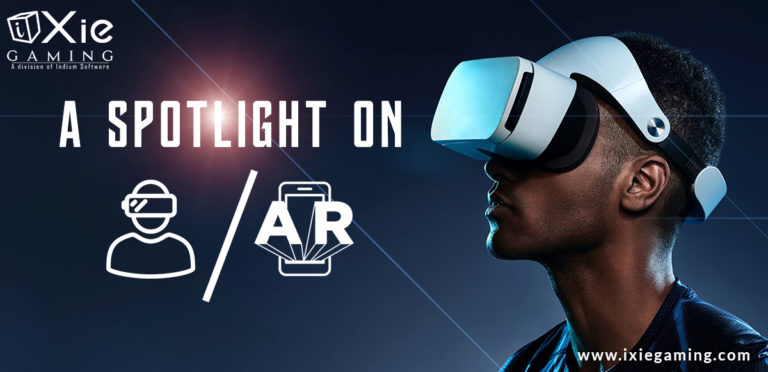It’s no news that the game development sector is a highly competitive one with capable hands who constantly work hard. However, getting a competitive edge in the industry requires creativity and that’s where rapid game prototyping comes in. It gives game producers the environment to conduct experiments and take chances. This in turn makes developers embrace experimentation thereby pushing the limits of game development.
This article aims to explore the rising significance of rapid game prototyping in the game development process. Also, we’ll investigate the advantages of rapid game prototyping to shed light on its role in fostering creativity and defining the future of game development.
What is Rapid Game Prototyping
In game development, rapid game prototyping is an iterative development technique. This technique leverages its speed to generate basic samples or models of game ideas and design features. Apart from the verification of ideas and testing gameplay mechanics, another major goal of rapid game prototyping is to get the opinions of users at an early stage of production.
The samples function as physical versions of the proposed game. This will not just let developers try out new ideas but also enable them to refine their design choices while anchoring their decisions on the opinions of users. The opinions or feedback give developers insight into what users think about the gameplay in terms of possible flaws or improvements. This in turn helps them to work on the finished product to create immersive games that appeal to the players.
The feedback helps developers identify potential flaws or improvements in gameplay, user experience, and overall design, allowing them to refine and enhance the final product. This approach is particularly valuable in the dynamic and competitive game development industry, as it saves time and resources by addressing issues early in the development cycle and helps create more engaging and polished games that resonate with players.

The Process of Rapid Game Prototyping
Rapid game prototyping is a powerful tool in game development. It is used to iterate on game ideas and design aspects.
Using an iterative process, short and straightforward prototypes are built to serve as physical representations of the anticipated gameplay. The procedure can be divided into several important phases:
1. Ideation: In this first phase, the developer needs to brainstorm and come up with ideas for the game. This is where discovery is done about the key factors that affect the gameplay experience. These factors include gameplay mechanics, themes, and features.
2. Prototype Creation: To quickly illustrate the essential gameplay components, developers use a variety of tools and programming frameworks to produce simple prototypes. These prototypes prioritize utility over visual refinement, allowing for speedy testing and iteration.
3. Testing and Feedback: Developers test the developed prototypes before sharing them with stakeholders and potential participants. The objective of this phase is to acquire insightful input on the user experience, gaming mechanics, and general enjoyment.
4. Iteration and Refinement: This is where the developers make adjustments to the game based on the opinions of the users. A lot of fine-tuning and optimization happens in this phase.
5. Validation and Decision-making: Developers evaluate the viability and compatibility of the prototypes with the planned vision as they progress. During testing, feedback and information are obtained that help determine whether prototypes or concepts should be developed further.
6. Production Phase: Once a workable and promising prototype has been determined, it acts as the basis for further development. The rapid prototype approach provides insights that direct the production phase. This allows for an improved and precise development cycle.
Benefits of Rapid Game Prototyping
Rapid game prototyping has various advantages for developers. However, the following are the main advantages:
1. Faster Concept Validation and Iteration: Rapid game prototyping reduces risk by enabling creators to try out and verify game ideas quickly. It facilitates rapid iteration to refine key gameplay dynamics and core features.
2. Enhanced Collaboration and Communication: As physical representations, prototypes help team members, stakeholders, and future participants communicate and collaborate effectively. This ensures insightful suggestions and criticism.
3. Cost and Time Efficiency: Prioritizes vital performance. This helps developers make quick iterations to save costs as it reduces the duration of game development services.
4. Risk Mitigation: Early prototype testing reveals defects like gameplay imbalances or usability problems and fixes them, lowering risks and raising the standard of the game as a whole.
5. Iterative Improvement: Rapid game prototyping iteratively designs the game and makes improvements based on player feedback. As a result, the finished product is visually appealing and captivating.
6. Player-Centric Design: Rapid prototyping enables developers to collect insightful user experience input while integrating prospective consumers in the testing process, making sure the game appeals to its target demographic.
7. Innovation and Creativity: In game design, rapid prototyping encourages experimentation, taking calculated risks, and creativity. It enables game designers to swiftly iterate and explore new ideas, producing one-of-a-kind and fascinating gaming experiences.
Tools and Technologies of Rapid Game Prototyping
In rapid game prototyping, developers have at their disposal a wide range of tools and technologies that greatly improve the process. Notable among such tools are Unity and Unreal Engine. These tools provide solid frameworks and great libraries for rapid prototyping. Visual scripting tools also provide customers with an easy-to-use interface for prototyping without requiring a detailed understanding of programming.
Dedicated prototype software, such as Framer or InVision, makes the process even easier by providing specific capabilities and templates. These tools, with their diverse capabilities and user-friendly interfaces, play a critical role in boosting productivity and creativity throughout the fast game prototyping phase.

Future Trends and Implications
It’ll be exciting to see what the future holds for rapid game prototyping, especially in this era of technological advancements. However, with virtual reality (VR) and augmented reality (AR), the prototyping process will be taken to new heights.
In the prototyping process, these technologies with great prospects will help developers make engaging games that are immersive and realistic. This will ultimately lead to more captivating and innovative game experiences for players.
Final Thoughts
Rapid game prototyping has brought about a significant change in the game production process. This is majorly due to its iterative and agile nature that gives game creators the liberty to explore ideas and tackle any problem that arises. The continuous demand for immersive and captivating games simply entails that rapid game development will continue to be relevant.
Planning to deliver engaging and highly immersive games to players worldwide? iXie would be the right choice with massive experience in the gaming industry over the past decade.






